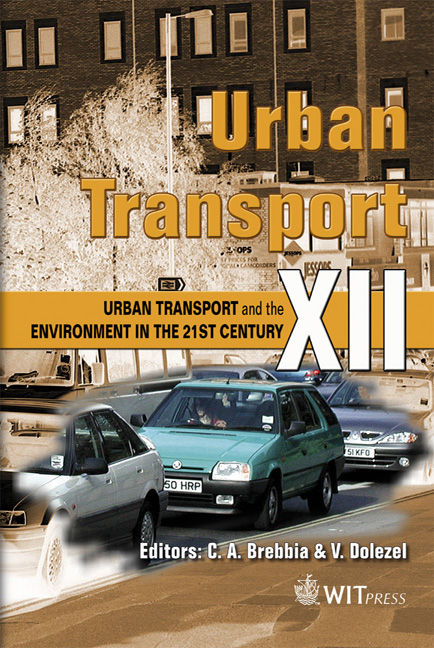Modelling Trip Timing Behaviour And The Influence Of Peak Spreading
Price
Free (open access)
Transaction
Volume
89
Pages
9
Published
2006
Size
1,078 kb
Paper DOI
10.2495/UT060211
Copyright
WIT Press
Author(s)
N. Holyoak & M. A. P. Taylor
Abstract
Peak period traffic congestion is a problem faced by many urban areas around the world as the supply of transport infrastructure struggles to keep pace with ever increasing transport demands from the community. As Australia’s largest capital city, Sydney is no exception with a population of over 4 million generating approximately 15.5 million trips each weekday, much of which occurs during morning and afternoon peak periods. It is for this reason that planners often focus on peak time periods for network provisions and operational management. This can lead to an inefficient allocation of resources, which could be unsustainable for future transport network operations. Peak spreading may be seen as having two broad dimensions. The first may be described as ‘passive’ peak spreading, which is a natural increase in the duration of a peak period as travel demand tests the capacity of a facility so that the levels of peak travel activity persist for a longer period. The second dimension is ‘active’ peak spreading, in which individual travellers deliberately change their travel behaviour to avoid peak periods, or transport policies are enacted to encourage people to travel away from the peak periods. The concept of peak spreading thus introduces strategies and management techniques to manage the peak traffic demand as it allows for the spreading of peak period traffic flow profiles in congested areas. It is therefore important to represent the effects of such strategies in a modelling environment for evaluation. After a critical analysis of current international practice for representing trip timing behaviour in current travel demand models, this paper provides a summary of observed trip timing behaviour in Australian capital cities. It also focuses on the requirements for a travel time model with abilities in the representation of peak spreading strategies and management policies. The model development to date is outlined with suggestions for future research directions. Keywords: peak spreading, trip timing, discrete choice model, travel behaviour.
Keywords
peak spreading, trip timing, discrete choice model, travel behaviour.





